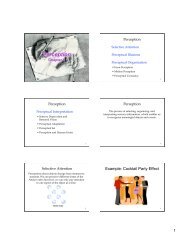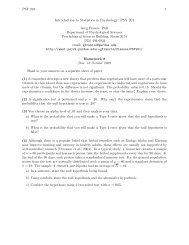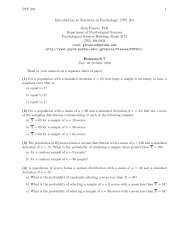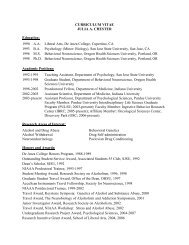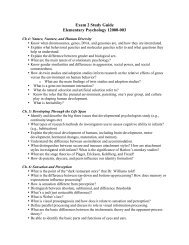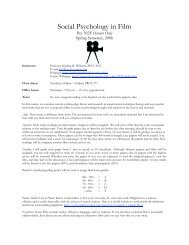Sensation & Perception
Sensation & Perception
Sensation & Perception
You also want an ePaper? Increase the reach of your titles
YUMPU automatically turns print PDFs into web optimized ePapers that Google loves.
Overtones<br />
Overtones: Makes the distinction among musical<br />
instruments possible.<br />
The Ear<br />
Outer Ear: Pinna. Collects sounds.<br />
Middle Ear: Chamber between eardrum and<br />
cochlea containing three tiny bones (hammer,<br />
anvil, stirrup) that concentrate the vibrations of<br />
the eardrum on the cochlea’s oval window.<br />
Inner Ear: Innermost part of the ear, containing<br />
the cochlea, semicircular canals, and vestibular<br />
sacs.<br />
Theories of Audition<br />
Place Theory suggests that sound frequencies<br />
stimulate the basilar membrane at specific places<br />
resulting in perceived pitch.<br />
Can not explain<br />
low frequencies<br />
http://www.pc.rhul.ac.uk<br />
79<br />
81<br />
83<br />
The Ear<br />
Cochlea<br />
Cochlea: Coiled, bony, fluid-filled tube in the inner<br />
ear that transforms sound vibrations to auditory<br />
signals.<br />
Theories of Audition<br />
Frequency Theory states that the rate of nerve impulses<br />
traveling up the auditory nerve matches the frequency<br />
of a tone, thus enabling us to sense its pitch.<br />
Can not explain<br />
high frequencies<br />
Sound<br />
Frequency<br />
100 200 Hz<br />
Auditory Nerve<br />
Action Potentials<br />
80<br />
82<br />
84<br />
Dr. Fred Hossler/ Visuals Unlimited<br />
14


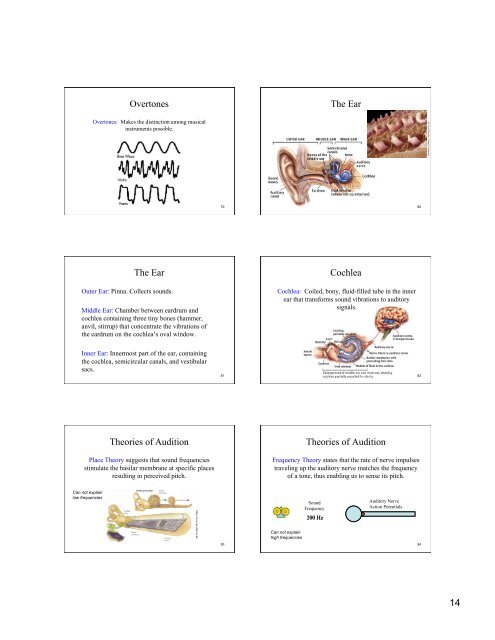
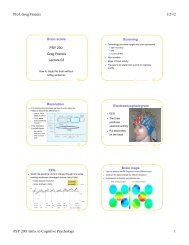

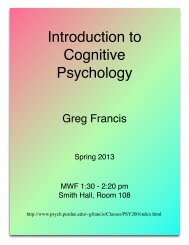
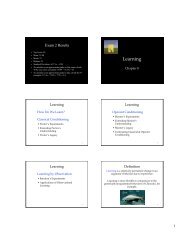
![Exam 4 Study Guide[1]](https://img.yumpu.com/45196739/1/190x245/exam-4-study-guide1.jpg?quality=85)
